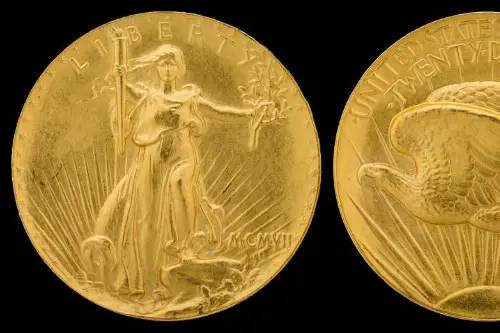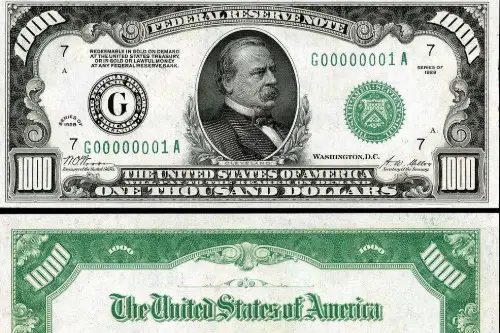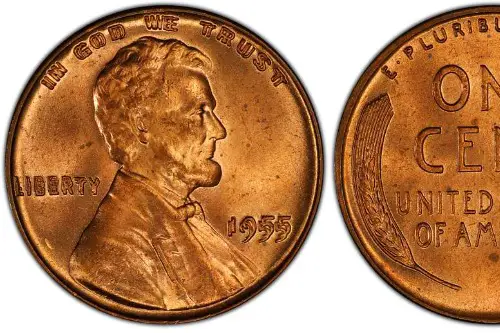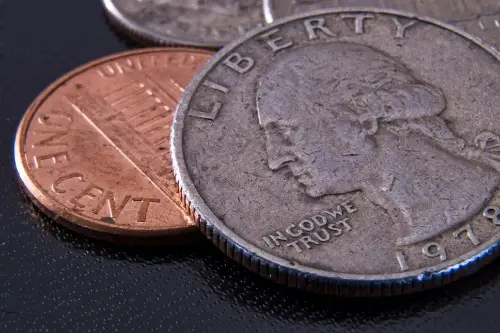1. The 1933 Double Eagle $20 Gold Coin

This coin was never meant to be in the hands of collectors, but a few managed to escape destruction. The 1933 Double Eagle was struck just as the U.S. left the gold standard, meaning newly minted gold coins were supposed to be melted down. Somehow, a small number were smuggled out of the Mint and ended up in private collections, sparking a decades-long legal battle. Today, they’re among the rarest and most valuable coins, according to Nora McGreevy from Smithsonian Magazine.
The Secret Service spent years tracking down and confiscating these coins, considering them stolen property. Despite the government’s efforts, a few still exist in private hands, creating intense demand among collectors. The U.S. Mint even reissued a legal version in 2002, but the originals remain the holy grail of coin collecting. Owning one without government approval is technically illegal, making these coins both highly valuable and highly risky to possess.
2. The 1928 $1,000 Bill with the Wrong Treasurer’s Signature

Back in the days when large-denomination bills were common, the 1928 series of the $1,000 bill had a serious oversight. Some of the earliest prints bore the signature of a treasury official who had already left office, making them technically invalid, according to APMEX. The government quickly noticed the mistake and recalled the flawed bills before they could be widely circulated. However, a few managed to survive, and today they are highly sought after by collectors.
Because these bills were meant for bank transfers rather than everyday spending, they didn’t circulate widely to begin with. That made tracking them down a little easier, though a handful still slipped through the cracks. Today, the misprinted $1,000 bills are worth far more than their face value, with collectors willing to pay huge sums for them. The mistake may have been minor, but it turned an ordinary banknote into a rare and valuable piece of history.
3. The 1955 Doubled Die Penny

At first glance, this penny looks normal, but a closer look reveals a glaring error. A misalignment during the minting process caused the date and lettering to appear doubled, giving it a shadowy, distorted look. Around 20,000 of these flawed pennies entered circulation before anyone at the U.S. Mint caught the mistake. Because they were regular pennies, people unknowingly spent them, making the surviving ones incredibly rare today, according to The Happy Coin.
Collectors quickly realized that this wasn’t just any old penny—it was a major printing blunder. As word spread, coin enthusiasts started searching their change in hopes of finding one. The error made these pennies highly collectible, with some selling for thousands of dollars, depending on their condition. What was once a simple minting mistake is now one of the most famous errors in American coin history.
4. The 2004 Wisconsin Extra Leaf Quarter

In 2004, the U.S. Mint released a Wisconsin state quarter with a small but crucial design flaw. Some of these coins featured an extra leaf on the ear of corn, either pointing up or down, due to a mistake in the die. The added leaf wasn’t part of the original design, making it an instant rarity when collectors noticed the flaw. Although the Mint never officially recalled them, their scarcity made them highly valuable almost overnight.
No one knows exactly how many of these error quarters were released, but estimates suggest a few thousand made it into circulation. The mistake is believed to have originated at the Denver Mint, where the quarters were produced. As soon as collectors caught wind of the extra leaf variation, they started searching their spare change. Some of these quarters have since sold for hundreds or even thousands of dollars, proving that even a tiny engraving mistake can make a huge difference.
5. The 2000 Sacagawea “Cheerios” Dollar

To promote the new Sacagawea dollar in 2000, the U.S. Mint teamed up with Cheerios to distribute 5,500 of them in cereal boxes. However, the promotional coins had a slightly different design from the ones that would later go into circulation. The “Cheerios” dollars had more detailed tail feathers on the eagle on the reverse side, a feature that was later simplified. At first, no one realized the difference, but years later, collectors spotted the variation and its rarity skyrocketed, according to Susan Headley from The Spruce.
Since only 5,500 of these unique dollars exist, they are now highly valuable to numismatists. Some have sold for thousands of dollars, making them some of the most expensive dollar coins in modern history. The mistake was unintentional, but it created an instant collector’s item hidden in boxes of breakfast cereal. Today, lucky owners of these Cheerios dollars hold a rare and valuable piece of modern American coinage history.
6. The 1861 $50 Demand Note with the Wrong City

During the early days of paper money in the U.S., the Treasury printed demand notes to help fund the Civil War, according to R.W. Julian from Numismatic News. One batch of $50 notes from 1861 mistakenly listed “New York” instead of “Washington” as the place of issue. Realizing the mistake, officials quickly recalled the bills and tried to fix the error before too many were released. However, some had already made it into circulation, making them extremely rare today.
The error wasn’t just a minor typo—it could have created serious confusion in the financial system. Since paper money was still a relatively new concept, accuracy was crucial to maintaining trust in the currency. This mistake underscored the importance of careful proofreading in banknote design. Today, surviving examples of this flawed $50 bill are worth a fortune to collectors.
7. The 1970-S Small Date Lincoln Penny with a Dime Back

In one of the strangest minting mistakes ever, some 1970-S pennies were struck with the back of a Roosevelt dime. This bizarre error happened when a dime die was accidentally used on a batch of pennies at the San Francisco Mint. Because pennies and dimes are different sizes, the mistake was immediately noticeable to anyone who looked closely. Despite the obvious error, a few of these hybrid coins made it into circulation before the Mint caught on.
These oddball coins are considered some of the most valuable mint errors ever discovered. Collectors love them because they aren’t just small misprints—they’re a complete mismatch of two different coins. Depending on their condition, some of these penny-dime hybrids have sold for thousands of dollars. It’s the kind of mistake that makes coin collectors obsessively check their spare change, just in case they hit the jackpot.
8. The 2005 Kansas “In God We Rust” Quarter

A simple printing issue turned an ordinary Kansas state quarter into one of the most famous modern coin errors. Due to a grease buildup in the Mint’s printing equipment, some 2005 quarters came out with a crucial letter missing from the motto “In God We Trust.” The “T” in “Trust” was faint or completely gone, leaving the phrase hilariously misprinted as “In God We Rust.” While the government didn’t recall these coins, the mistake made them instant collectibles.
Because this error wasn’t an intentional design flaw, it happened randomly during production. That means these flawed Kansas quarters could turn up anywhere, making them fun for collectors to hunt down. Some have sold for up to $100, a nice return for anyone who finds one in their pocket. It’s proof that even a little grease can turn an ordinary coin into a collector’s item.
9. The 1918 $1 Bill with a Face on Both Sides

Back when paper money was still being manually inspected, one huge mistake managed to slip through. Some 1918 $1 bills were accidentally printed with George Washington’s face on both the front and the back. This error happened when a sheet of bills was printed on one side, then mistakenly fed into the machine upside down for the second printing. The mistake wasn’t caught until after some of these bills had already entered circulation.
Because these misprinted bills were so rare, they became highly sought after by collectors. The government quickly recalled any they could find, but a few still exist today. A single surviving example can be worth tens of thousands of dollars, depending on its condition. It’s one of the best-known examples of a printing mistake turning a basic banknote into a numismatic treasure.
10. The 1943 Copper Penny That Shouldn’t Exist

During World War II, the U.S. Mint switched from copper pennies to steel ones to conserve metal for the war effort. However, a few copper blanks from 1942 were still in the machines when the Mint started producing 1943 pennies. As a result, a small number of 1943 pennies were accidentally struck in copper instead of steel. These pennies weren’t meant to exist, and when the mistake was discovered, the government tried to remove them from circulation.
Despite the recall, some 1943 copper pennies slipped through the cracks. Because of their extreme rarity, they are among the most valuable error coins ever produced. One of these pennies sold for $1.7 million in 2010, making it one of the most expensive Lincoln cents in history. For collectors, finding a genuine 1943 copper penny is like winning the lottery.
11. The 1875 $10 Bill with a Misspelled State Name

One of the most embarrassing currency mistakes in history happened on an 1875 $10 bill. The note was meant to feature the name of the state of “Missouri,” but instead, it was printed as “Missippi.” This glaring typo somehow made it past multiple rounds of review before the bills were printed and distributed. Once the mistake was caught, officials scrambled to remove as many as possible from circulation.
Despite the recall, some of these flawed bills survived, making them highly valuable today. Collectors love them because they show just how easy it was for human error to sneak into early American currency. Even though spelling mistakes seem minor, they can seriously undermine confidence in a nation’s money. These misspelled $10 bills are now worth far more than their original face value.
12. The 1934 $100,000 Bill That Was Too Powerful to Circulate

The largest denomination of U.S. currency ever printed was the 1934 $100,000 bill, but it was never meant for the public. Featuring a portrait of Woodrow Wilson, this bill was used exclusively for transactions between Federal Reserve Banks. However, some of these ultra-high-value bills were accidentally released into private hands, creating a major problem. The government quickly moved to recover them, fearing that such powerful bills could destabilize the economy if widely circulated.
Because they were never meant for general use, owning one today is illegal. The Treasury Department considers any surviving $100,000 bills to be government property, and private collectors are not allowed to keep them. Despite this, rumors persist that a few of these ultra-rare bills are still hidden away in secret collections. If one ever surfaced on the open market, it would be worth an astronomical amount—far more than $100,000.


